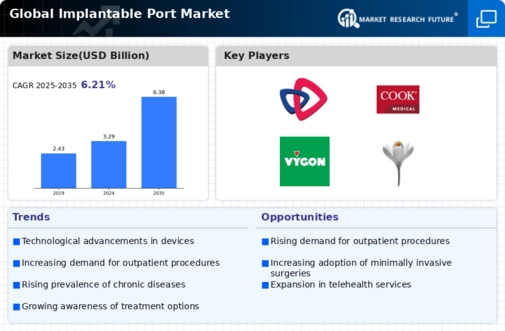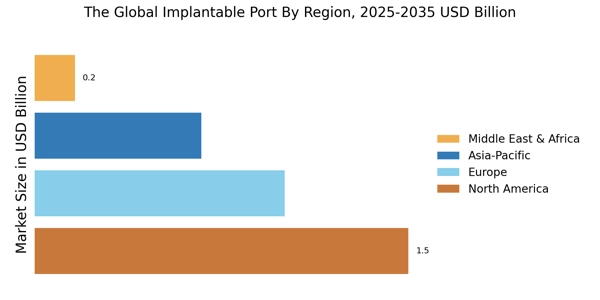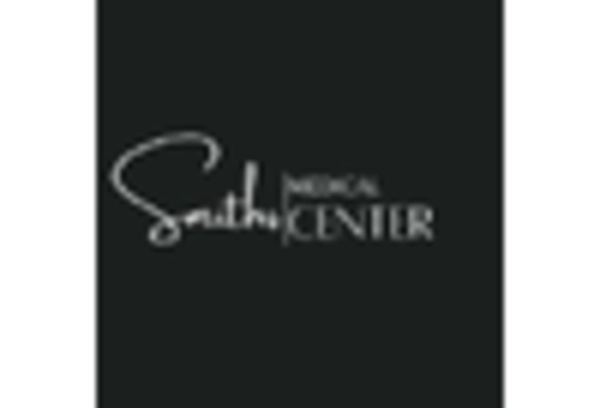Rising Chronic Disease Prevalence
The Global Implantable Port Industry is significantly influenced by the rising prevalence of chronic diseases, such as cancer and diabetes, which necessitate long-term treatment options. As the global population ages, the incidence of these diseases is expected to increase, leading to a higher demand for implantable ports. According to recent statistics, the number of cancer patients requiring chemotherapy is projected to rise by 30% in the next decade, thereby driving the need for reliable vascular access solutions. This trend indicates a robust market potential, as healthcare providers seek efficient methods to administer treatments over extended periods. Consequently, the market is likely to expand in response to this growing demand.
Increasing Awareness and Education
The Global Implantable Port Industry is benefiting from increasing awareness and education among healthcare professionals and patients regarding the advantages of implantable ports. Educational initiatives and training programs are being implemented to inform medical staff about the benefits of these devices, including reduced hospital stays and improved quality of life for patients undergoing long-term treatments. As awareness grows, more healthcare providers are likely to recommend implantable ports as a viable option for vascular access. This trend is expected to drive market growth, as patients become more informed about their treatment options and advocate for the use of implantable ports.
Regulatory and Reimbursement Changes
The Global Implantable Port Industry is also shaped by evolving regulatory frameworks and reimbursement policies. Governments and health organizations are increasingly recognizing the importance of implantable ports in improving patient care, leading to favorable reimbursement rates for these devices. Recent changes in healthcare policies have streamlined the approval processes for new technologies, encouraging innovation and market entry. Additionally, as healthcare systems aim to reduce costs associated with complications from traditional access methods, implantable ports are becoming a preferred choice. This shift in regulatory and reimbursement landscapes is expected to bolster market growth, as more healthcare providers adopt these devices to enhance patient management.
Technological Advancements in Implantable Ports
The Global Implantable Port Industry is experiencing a surge in technological advancements that enhance the functionality and usability of implantable ports. Innovations such as biocompatible materials and improved catheter designs are being developed to minimize complications and improve patient outcomes. For instance, the introduction of ports with integrated antimicrobial properties has shown a reduction in infection rates, which is a critical concern in long-term catheterization. Furthermore, advancements in imaging technologies facilitate better placement and monitoring of these devices, thereby increasing their effectiveness. As a result, the market is projected to grow at a compound annual growth rate (CAGR) of approximately 6.5% over the next five years, driven by these technological improvements.
Growing Demand for Minimally Invasive Procedures
The Global Implantable Port Industry is witnessing a growing demand for minimally invasive procedures, which is influencing the adoption of implantable ports. Patients and healthcare providers are increasingly favoring techniques that reduce recovery time and minimize surgical risks. Implantable ports offer a less invasive alternative to traditional methods of vascular access, allowing for easier administration of medications and fluids. This shift towards minimally invasive solutions is likely to propel market growth, as more patients seek options that align with their preferences for comfort and safety. The trend suggests a promising future for the implantable port market as it adapts to evolving patient needs.


















Leave a Comment